Eight. Eight asteroids have been discovered before they entered the Earth atmosphere. And three out of them all have been discovered by the same person: Krisztián Sárneczky from GINOP KHK observatory (K88, Piszkéstető, Hungary), discovered 2022 EB5, 2023 CX1. On January 20th, 2024, 21h 48min UT, he is again the first who spots a small dot of light where nothing should be present (see X post below).
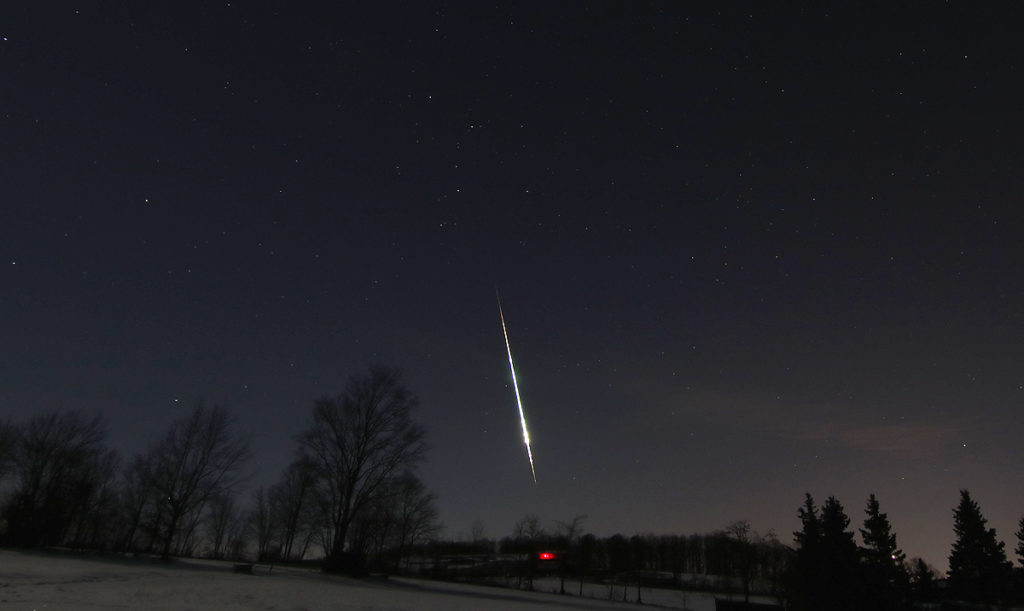
An asteroid discovered less than 3 hours before it entered the atmosphere
Provisory named Sar2736, it had 7% probability to impact the Earth a few hours ahead. A few observations and a more accurate orbit determination later (see X post below), and the doubt vanished: the nearly 1-m asteroid (0,8 to 1,4-m, according to photometry) was to impact the Earth less than 3 hours later, on January 21st, 00h 32min UT, above North-Eastern Germany, tens of kilometers West of its capital, Berlin! Immediately, numerous observatories were directed to the small object, trying to follow it during his fast run into the Earth. The fast rotator Apollo-type asteroid was even photographed while entering the Earth shadow (Figure 2), 7 minutes before it became a fireball!
The discovery images of the imminent impactor #2024BX1 (aka #Sar2736 ) with the 60-cm Schmidt Telescope at #Piszkéstető Mountain Station, part of Konkoly Observatory (#konkolyobs) in #Hungary. pic.twitter.com/qMcXerhvL4
— Krisztián Sárneczky (@sarneczky) January 21, 2024
#Asteroid 2024 BX1 was first discovered by @sarneczky at Piszkéstető Station in Hungary about 3 hours before it burned up over Germany. Shortly after, multiple observatories in Europe contributed over 180 observations of this asteroid. pic.twitter.com/Gf4THC1Lkw
— Tony Dunn (@tony873004) January 21, 2024
This is asteroid 2024 BX1 observed 25 minutes before Earth impact. #2024BX1 #asteroid @Astro_Romania pic.twitter.com/d95k70Pf9R
— sonkab (@sonkab) January 21, 2024
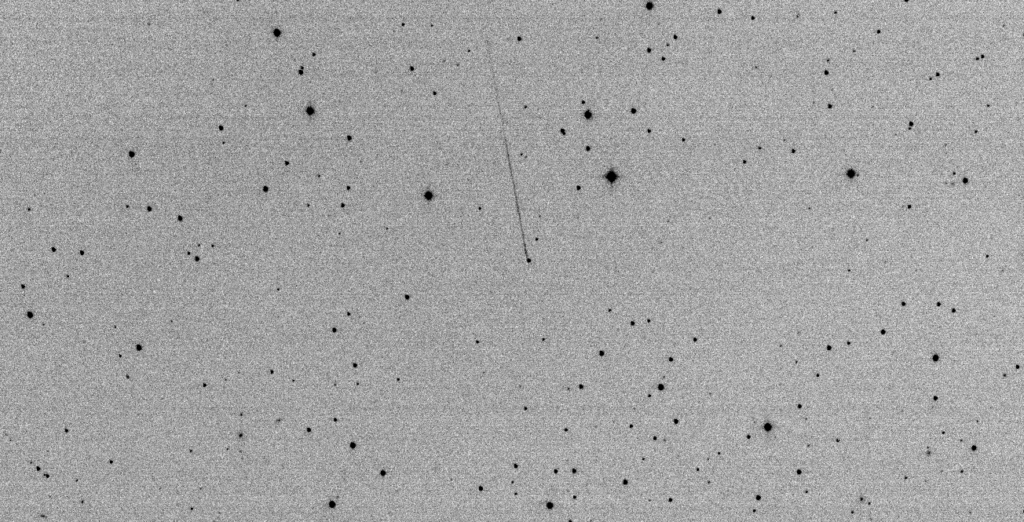
A very bright fireball
Thanks to numerous alerts and the populated areas above which the fireball was to occur, many people and webcams were recording the sky activity around the time the fireball was to happen. This exceptional event and all the emotions it brought is very nicely written in an article of the Oldenburg University Tobias Hoffmann. Some also observed it and reported it via the Fireball report form (Event #2024-423). Many captured the bright event, showing a 5 seconds fireballs entering the Earth atmosphere with a steep 75° inclination to the horizontal and a 15 km/s speed. The meteor displayed numerous very bright flares, the brightest of them reaching mag. -22 (Figure 5)! The fireball was widely captured by the AllSky7 network (Figure 3) and a Fripon-Germany camera (Figure 4).
Video credit: ALLSKY7 / Sirko Molau – AMS16 Ketzuer
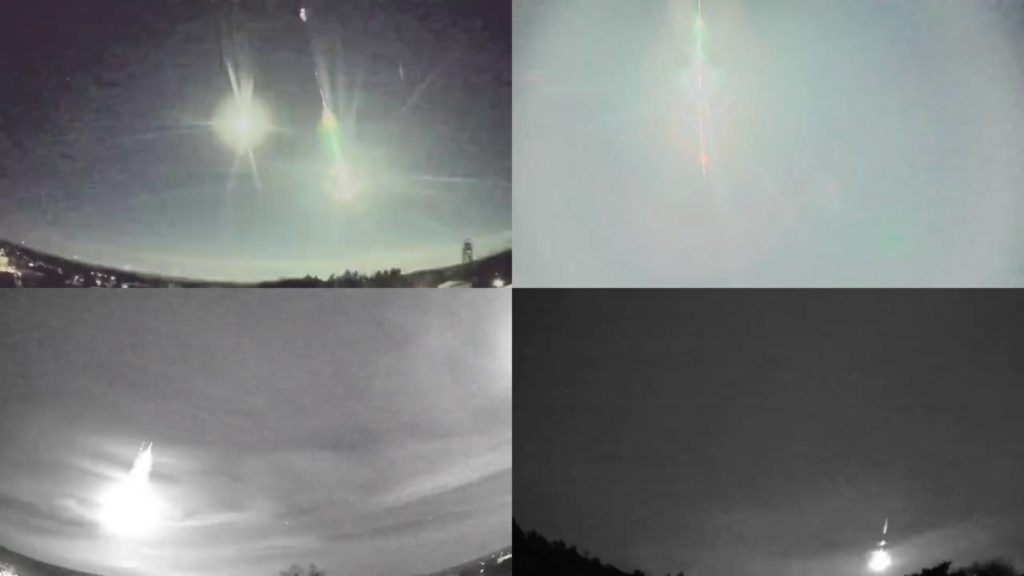
Thanks to my wonderful colleague @allplanets I knew where and when to look for a #meteor coming down over #Berlin tonight. Here’s the video! pic.twitter.com/kBhGz6Ahir
— Michael Aye (@michaelaye@mastodon.online) 🇩🇪🇺🇦 (@michaelaye) January 21, 2024
Here it is pic.twitter.com/6cDzlJ5hqD
— GionGionni (@GionniGion) January 21, 2024
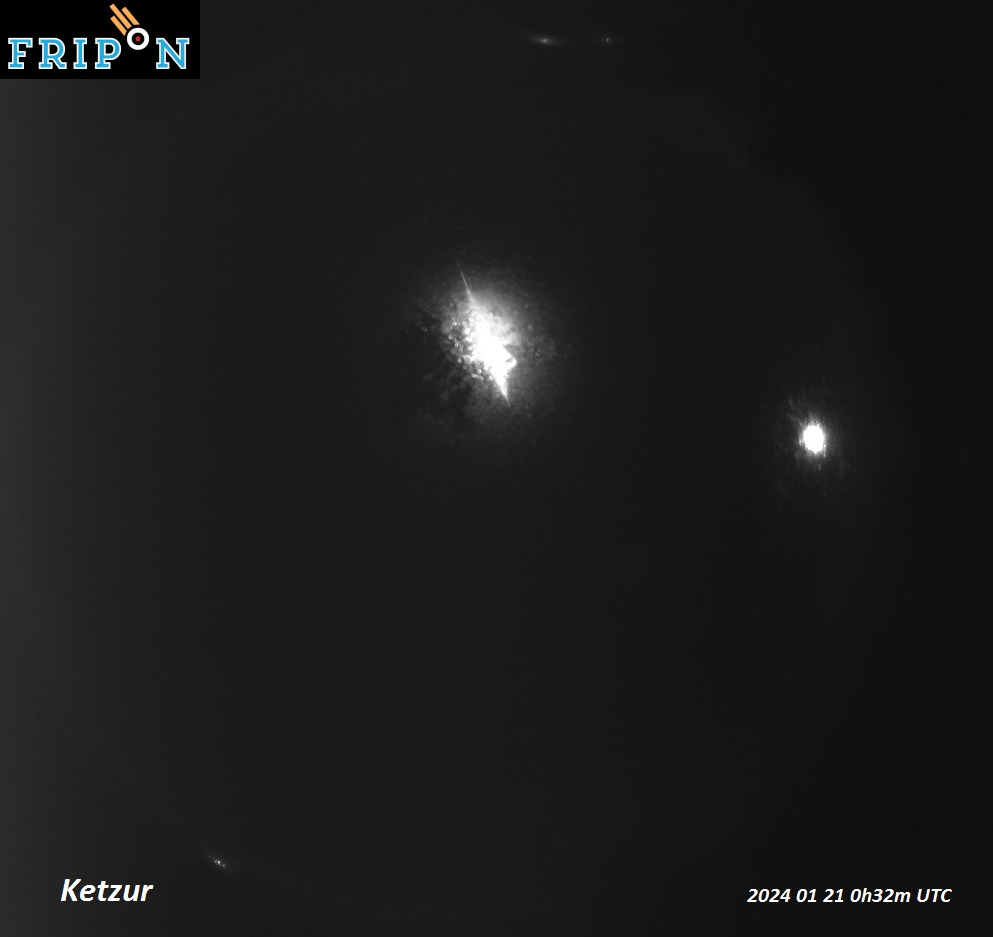 Figure 4- Fireball associated to 2024 BX1 entry captured by Fripon-Germany camera in Ketzür (DEBB01). Credit: Fripon-Germany
Figure 4- Fireball associated to 2024 BX1 entry captured by Fripon-Germany camera in Ketzür (DEBB01). Credit: Fripon-Germany
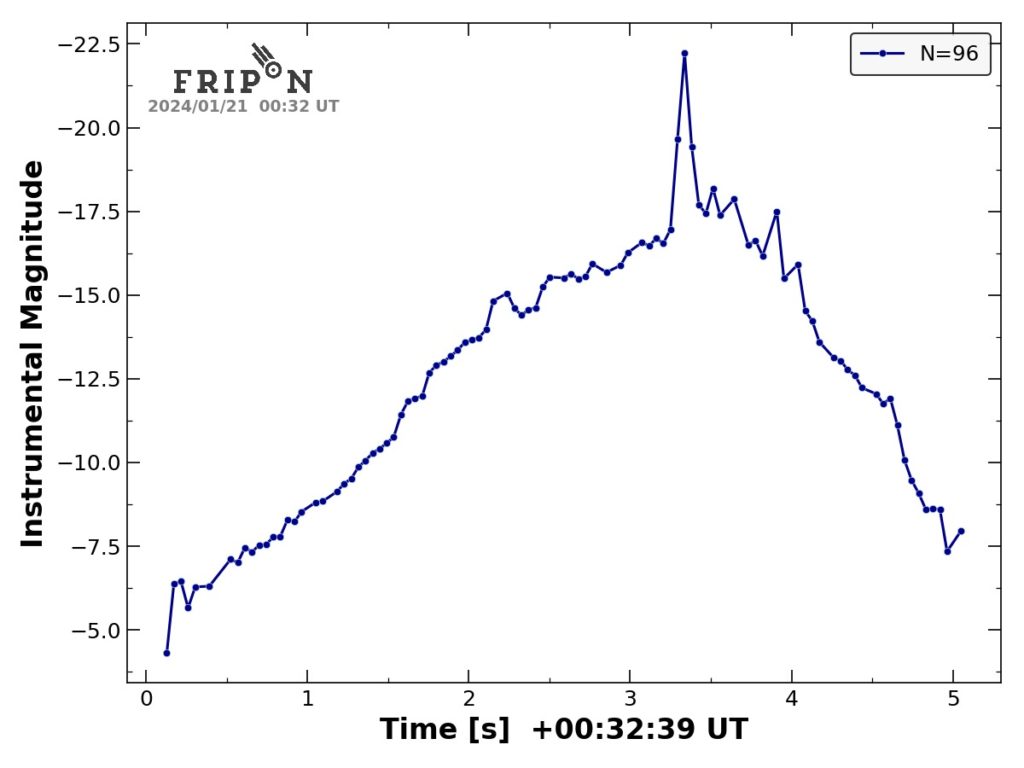 Figure 5- Magnitude curve calculated from Fripon-Germany recording of 2024 BX1 entry (Figure 3). Credit: Fripon
Figure 5- Magnitude curve calculated from Fripon-Germany recording of 2024 BX1 entry (Figure 3). Credit: Fripon
The asteroid entry was also recorded with infrasonic arrays, which should allow to estimate the total energy of the impactor in the close future.
Low-frequency inaudible sound (#infrasound) observed from Asteroid #2024BX1 (Sar2736) across Europe – up to 1615 km distance at @CTBTO infrasound station IS43. Nearest observation (@CTBTO IS26 at 412 km) clearly shows a moving source. @KNMI pic.twitter.com/TidHgHY1PI
— Jelle Assink (@jdassink) January 22, 2024
Surviving meteorites?
Meteorite hunting teams organized very quickly to try to find remains of the original asteroid. Strewn field were calculated (see X post below), and as soon as January 21st, the first team were walking through the crops in the snow and a freezing -12°C to try to find meteorites (see X post below). Researches are always going on, but we will keep you informed as soon as meteorites are discovered!
Where are #meteorites from #2024BX1 / #Sar2736 ?
Preliminary modelling shows most small ones are in woods ~10 km west of Nauen, but 10+ g rocks are in fields.
Due to the very steep entry angle, the strewn field is quite small, so the chances are good. pic.twitter.com/OsbHggEGOZ— Denis Vida (@meteordoc) January 22, 2024
We are out in the fields around Neenhausen with @mfnberlin looking for meteorites.
We are looking for dark looking rocks, with a glassy crust. If you find any take the GPS location of the fragment, put it in a clean plastic bag and get in touch with us. pic.twitter.com/L6UEQbXlGi
— Sample Analysis Laboratory (SAL) at DLR (@SAL_DLR_Berlin) January 22, 2024




 You saw something bright and fast? Like a huge shooting star? Report it: it may be a fireball.
You saw something bright and fast? Like a huge shooting star? Report it: it may be a fireball.  You counted meteors last night? Share your results with us!
You counted meteors last night? Share your results with us!  You took a photo of a meteor or fireball? You have a screenshot of your cam? Share it with us!
You took a photo of a meteor or fireball? You have a screenshot of your cam? Share it with us!  You caught a meteor or fireball on video? Share your video with us!
You caught a meteor or fireball on video? Share your video with us!
One comment
I was struck by an asteroid in 1990. A non predicted one. Probably easily confusable with the NY 2014 AA. Yet it’s a water ball with Hawaii at center. easterasteroid.com archive.org/details/thedarkeasterasteroid asteroids.fyi